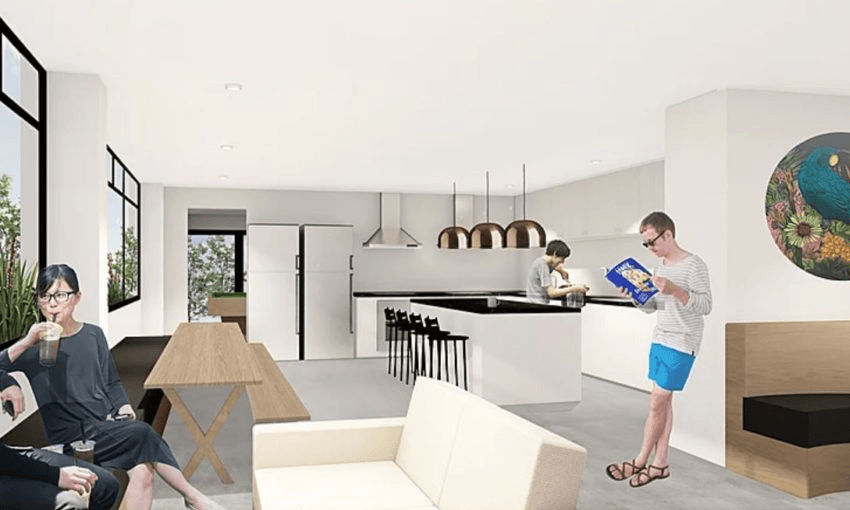Don’t fall for the spin that presents this latest revision of a historical hostel building type as some kind of genuinely community-based housing, argues Mark Southcombe
‘Co’ is hip and cool. It’s fashionable as a prefix for all sorts of community-based and community-led, co-operative, collaborative and collective housing models. The prefix is also being co-opted to dress up hostel-living situations such as Coh, a new self-styled 22-bederoom co-living project at the top of Symonds Street in Auckland.
I want to join those calling out this vanguard of New Zealand’s decreasing housing standards for what it is: mean-spirited share housing for people caught by the housing crisis.
Co-living housing is also a focus of development interest internationally, because it is one of the most profitable forms of housing development possible. The minimisation of space and development cost per person housed results in maximisation of development and rental profits.
Sadly, we are going to see a lot more of this type of housing in New Zealand, as is already happening around the world.
It’s not all bad; as part of a diversified range of housing types, it can fill an increasing need.
On a recent visit to New Zealand, international co-housing expert Dr Michael LaFond discussed the co-living trend and noted that, like any other housing option, the quality of the design is critical. The extent of individual and common space compared with other housing options is a good indicator of quality or lack of quality.
At our CoHoHui national Collective Urban Housing symposium at Victoria University of Wellington in February, we had presentations from 10 positive collective housing projects. Other recent examples of quality collective urban housing in New Zealand include emerging projects such as Urban Habit in Wellington and Peterborough Housing cooperative in Christchurch.
But too often co-living developments are a temporary or transitional housing solution analogous to the motels currently being rented by the government to cope with our serious and urgent housing needs. This is the antithesis of community.
We need to look at the design quality of each case closely to ensure it’s not just a new way to circumvent and decrease minimum living space standards like some tiny house subdivisions are becoming.
Coh, apparently short for ‘co-home’, is a developer-led and managed hostel investment which is seemingly masquerading as community or co-operative housing. It is really just a mean hostel version of a rest home targeted at a younger demographic. It’s not even as good as a rest home, featuring minimal bedrooms and shared bathrooms. Most rest homes today provide ensuite bedrooms.
Its expressed intention is to facilitate community via a structured engagement programme for residents (in the manner of a first-year university student hostel).
But use of the ‘Co’ in Coh suggests community-led housing, shared decision-making and community management.
Coh – pronounced like ‘dough’, slang for money, or ‘Doh’, Homer Simpson’s famous phrase for a silly mistake – is a silly naming mistake for a project operating at the margins of New Zealand housing standards.
Let’s not confuse this latest revision of a historical hostel building type with truly community-based housing, whatever spin the developer puts on what it is doing.
Mark Southcombe is a senior lecturer and Collective Urban Housing researcher in the School of Architecture at Victoria University of Wellington.
